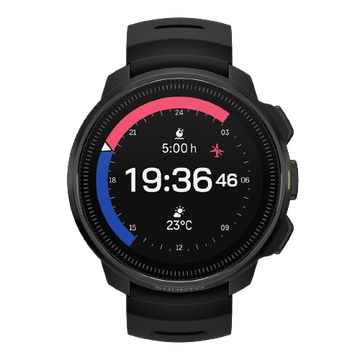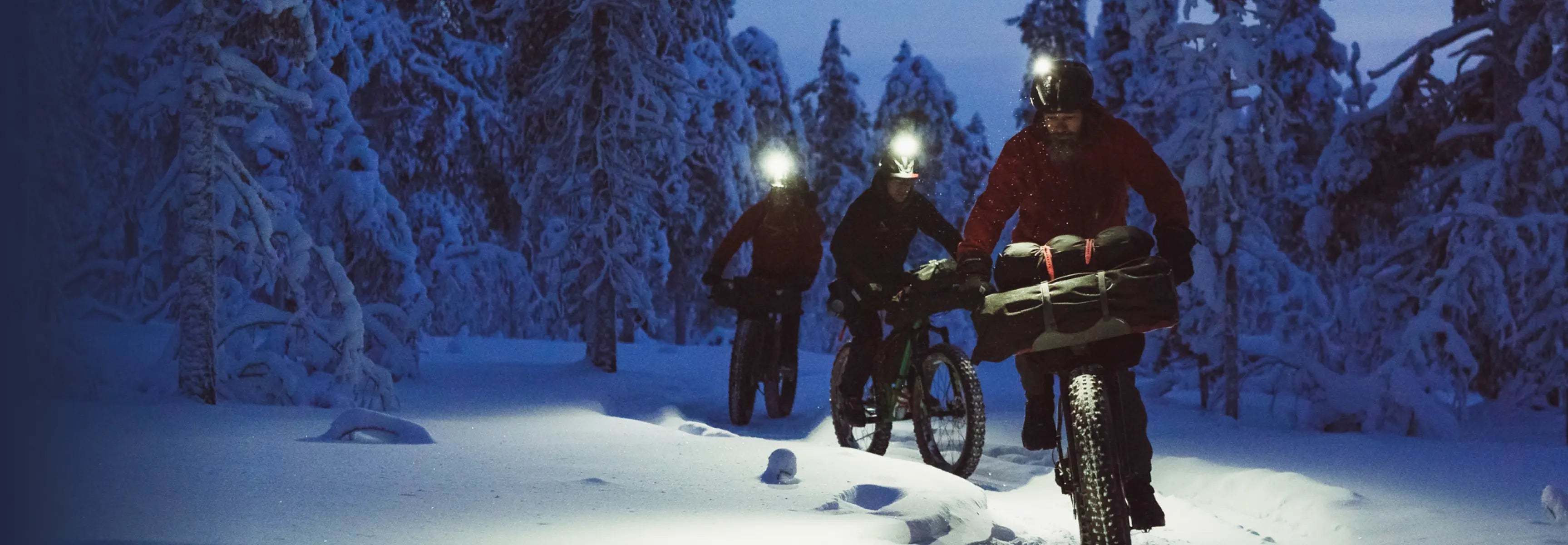
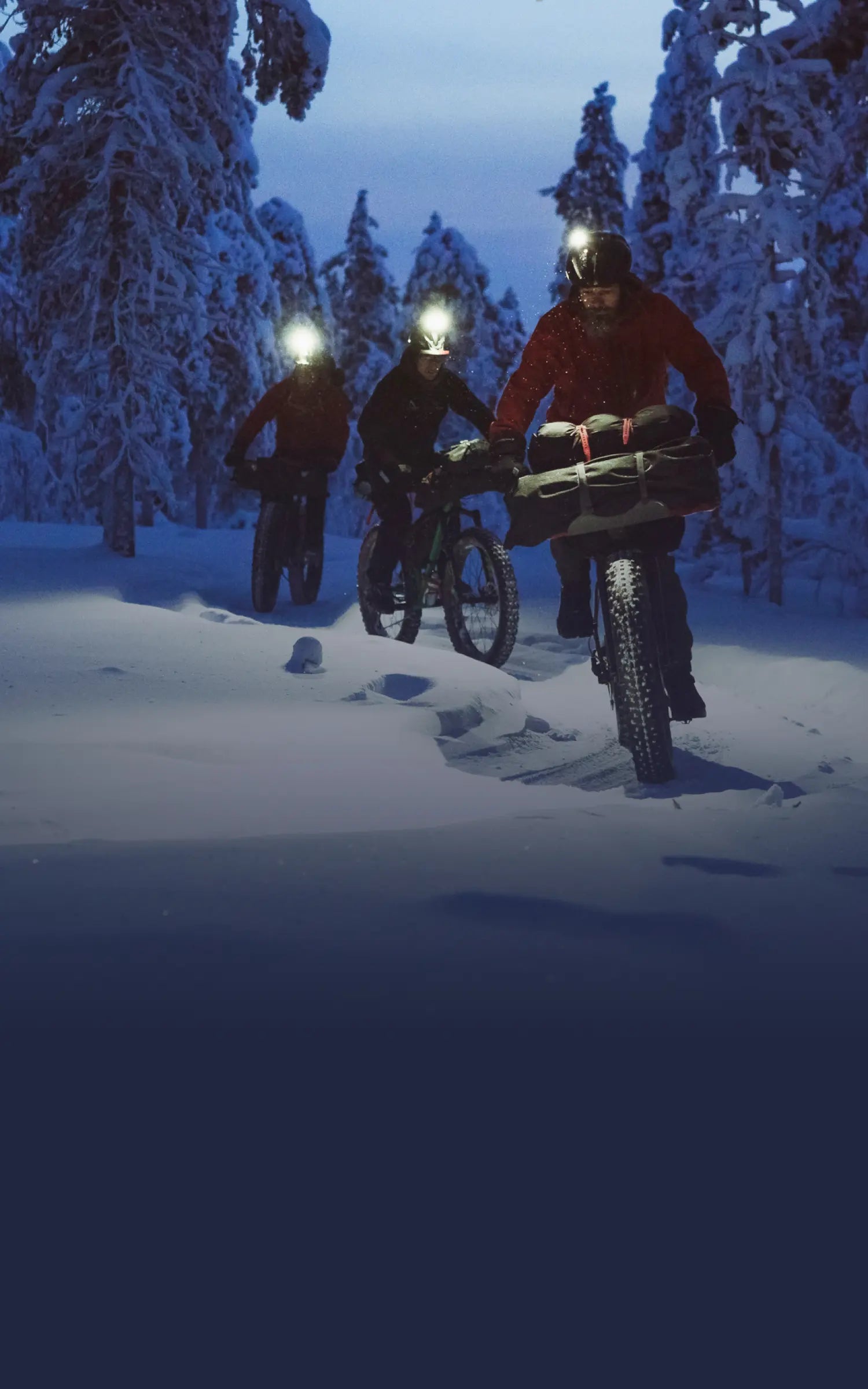
Suunto Blog

Getting more from your Ambit than just basic stats
Coach to elite ultra runners Jason Koop says there’s more training insights we can get from our Ambits than most of us realise.© zooom.at/bergermarkus.com
When it comes to trail running, coach Jason Koop says gaining meaningful information demands more effort than required for cycling or road running. “Coach Koop” – as his athletes call him – has recently published a book called Training Essentials for Ultrarunning, which condenses the knowledge he’s amassed over his sixteen-year career. It’s received positive reviews and is a must on the bookshelf of every dedicated trail runner. He’s also the director of coaching at trainright.com and is a big fan of using cutting-edge technology like Suunto Ambits to achieve better training results.© zooom.at/bergermarkus.com
There’s more in there
Koop says many trail runners don’t know how to extract high value information from their “wrist-top computers”. It takes more effort and know-how than gaining high quality information for cycling and road running via power meters and pace.
“It’s the same type of information – how hard the workout was, what energy systems were tapped into, how much stress was put on the body, but the tools are different and with trail running it takes a few more steps to extract it,” Koop says.
© zooom.at/bergermarkus.com
Trail running makes it tricky
When it comes to cycling and road running this is easier, says Koop, because it’s simply a matter of calculating the time of a workout session with the power output for cycling or the pace for running. This simple formula makes it easy to score how hard and stressful a workout was.
“It’s not as easy with trail running because you have all these other factors like the trail surface and the elevation gain and loss so you can’t work it out as easily – it just takes a few more steps to extract meaning from the information,” Koop says. “A lot of trail runners are stuck at the information stage.”
© zooom.at/bergermarkus.com
Moving past the basic numbers
Numeric information such as distance, time, elevation gain and loss, pace and heart rate are interesting, Koop says, but in of themselves don’t offer the necessary insight to build and guide a systematic trail running training programme. Achieving this, he says, requires a “physiological tie-in”.
“There’s a big difference between just looking at the usual information your watch records versus using all of it to determine how hard the workout was, how much training stress was involved, and which energy systems were tapped into. That's the bridge that ultimately needs to be gapped – taking the statistical information and having an actual training tie in.”
© zooom.at/bergermarkus.com
Taking the next steps
There are two key steps to get past the information stage.
“Firstly, you need to normalise your pace so when you’re running a 10 minute per mile pace uphill you know what pace that equates to on the flats. Strava and Training Peaks have algorithms that do this for you. This gives you an apples to apples comparison for workouts that have different elevation gains. This first step sharpens the picture of the workout from a blurred mess to something where meaningful analysis can take place. It allows you to see how hard a workout was.
“The second step is to compartmentalise the aerobic stress a workout session generates, which is predominantly during the up hill and flat sections, from the muscular-skeletal stress predominantly generated in the downhill sections.
“If your normalized pace on the flats and uphills are getting better, your aerobic system is adapting. Similarly, if you are handling the total amount of descending or the rate of descending better, your muscular-skeletal system is adapting.”
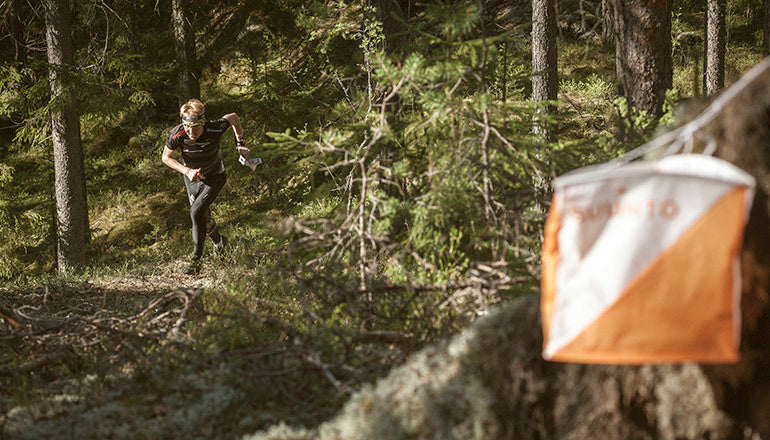
How to use Suunto AIM-6 Thumb Compass
Mårten Boström says that the process of developing a new compass was an interesting one. “I have realized how much I as an elite orienteer can give insight to the product development team into how the product is actually used,” Boström says.
The team came up with an innovative design that supports three methods of direction finding. You can easily switch between methods, even during the same event, to match the challenges of your current terrain or the distance to the next control point.
With the AIM compasses it is possible to find and follow the direction in different ways. Which methods do you use and when?
On short legs I simply place the compass on the control leg and turn my body facing the next control to align the map meridians and needle north.
After I have picked a distinguishable object in the terrain to aim for I check which color/symbol -combination the north arrow is pointing to and aim for that same visual combination on every glimpse while proceeding towards the next control.
If I only need a course direction towards a big object (e.g. a lake) I might just use a whole sector in a similar manner.
On long legs I turn the compass capsule so I can see the north arrow fit in the orienting indicator – thus I don't need to keep the compass on top of the map on the rest of the leg.
In all of these I'm of course AIMing into the correct direction where the red arrow on the far end of the compass plate is.
The new Suunto AIM-6 can be used with a magnifying lens. When do you use that?
A loupe (or magnifying lens) is starting to be a popular accessory even for orienteers with good eyesight. There are more and more details on the maps nowadays and the loupe really helps.
Place the loupe in front of the thumb compass so that you can see the corner of the compass baseplate but mainly magnifying the map.
READ MORE
Learn more about the new AIM-6 and AIM-30 compasses
World champion’s 10 tips for orienteering
Meet the orienteer who runs a 2h 18m marathon

DEVELOPING A NEW ORIENTEERING COMPASS IS A TEAM EFFORT
Mårten, when did you start working on this project?
I have been involved in the development of Suunto's new orienteering compass line from the beginning of the year.
Product development is exciting as I have realized how much I as an elite orienteer can give insight to the product development team into how the product is actually used.
Mårten Boström worked closely with Suunto's compass business line manager Henrik Palin and designer Heikki Naulapää.
What did you want to change or improve?
As the compass is an orienteer's most precise aiding tool in navigating it's been an interesting task to refine the current compass to become an even better friend when out in the woods.
I wanted to redesign the needle in order to achieve a better contrast on to the map, make the needle much more stable while keeping it fast and take away some markings on the baseplate.
The graphics on the baseplate and the compass capsule were designed based on Mårten’s feedback.
Since the use of the compass needs to be swift I wanted to add color and symbol codes on the edge of the bezel so that there's no need to rotate the compass capsule. Using the colors and symbols one can simply memorize where the arrow is aiming and advance rapidly.
Our goal was to make the colors and symbols on the AIM distinguishable but easily memorable.
What are the key characteristics of a great compass?
A great compass should be easy to use and have a fast & stable needle.
How do you actually test a compass?
The compass is best tested in actual orienteering conditions out in the forest where temperatures vary from -10°C to +35°C and twigs hit your face while you are trying to navigate through unknown terrain over hills and through marshes!
Learn more about the new AIM-6 Thumb Compass
Learn more about the new AIM-30 Compass
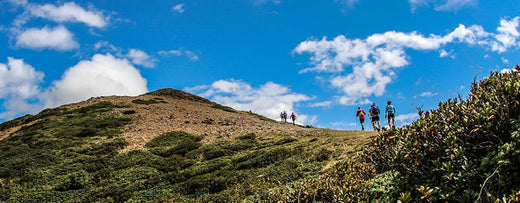
Four myths about ultra running that you need to know
Director of coaching at trainright.com, Jason Koop has been guiding elite athletes for decades. His book Training Essentials for Ultrarunning is a veritable goldmine of training knowledge. We caught up with coach Koop to talk about the book, which he says disproves widely held beliefs about ultrarunning.
Training for an ultramarathon demands high volume and time
The first myth, says Koop, is really bad for the sport of ultrarunning; the widespread, and discouraging, belief that to run one you need to clock in a seemingly insurmountable number of kilometers or miles and hours each week.
“It creates a barrier to entry for a lot of people because they think they have to train 18 or 24 hours a week,” Koop says. “The fact of the matter is you don’t need that much time and that much volume. While more is better, there’s a point of diminishing returns. After about nine hours per week, every additional 10% of volume doesn't correlate to a 10% improvement in performance or capability. It might only be 5 or 1% you get back.
For a 100 mile race, Koop says doing 10 to 12 hour training weeks for eight to 10 weeks is enough. For the 50 km or 50-mile distance, it’s about nine hours for about six to eight weeks.© Philipp Reiter
You need mountains to properly train for an ultramarathon
While living and training in the mountains is helpful, it’s not essential. “Consider Kaci Lickteig,” Koop says. “She was second at the Western States 100 in 2015, yet she lives in Omaha, Nebraska and only does about 305 m of vertical a week. It takes her 20 weeks to accumulate the amount of vertical that’s in the Western States 100. But yet she has been really successful. It’s nice to train in the mountains if you can, but most normal people can be successful without them. The more important priority is improving your cardiovascular engine.”© Philipp Reiter
You have to be freakishly talented to run an ultramarathon
Koop says a lot of people believe you need to be genetically endowed with a sky-high vo2 max to be a good ultra runner. “I really haven’t found that to be the case,” he says. “Most of the guys and the girls we test, they’re not even close to an Olympic caliber marathon runner or even to a national caliber marathon runner. An ultra runner’s aerobic engine isn’t the sole determinant of performance in the way as it is for a marathoner. There is a lot of other factors that play more of a role in an ultramarathon – strategy, mental toughness and nutrition, for example. You have to be able to do a big mix of things and don’t have to be the biggest aerobic powerhouse on the planet.”© Philipp Reiter
I would never be able to finish in time
“Most ultra marathon cut off times are really generous,” Koop says. “The physiological talent or aerobic power that it takes to run at the pace to make cut off is actually within reach of most people. A typical cut off time for a 100 miler, for example, is 30 hours – that’s 18 minutes a mile. Just about everybody walks one mile in 18 minutes and 30 seconds. What that indicates is the fitness required to complete the task isn’t very high. So it’s an accessible sport from this standpoint.”
Lead image: © Philipp Reiter

WORLD CHAMPION’S 10 TIPS FOR ORIENTEERING
What equipment is needed to start orienteering?
A map, a compass and sturdy shoes are the basic requirements.
What’s the scale of an orienteering map usually?
Maps are of scales 1:10000 or 1:15000, larger scales in urban events. That means that on the regular 1:10000 map 1 cm in the map depicts 100 m in the terrain.
What advice can you give on the map symbols?
Maps are drawn with same symbols worldwide and the colors on the map roughly resemble those you see in real life in front of you. Blue stands for water, white for normal forest, green for thick forest, black mostly for built objects and yellow depicts open areas. However, brown representing elevation contours is the most important color for navigation.
How is an orienteering course presented on a map?
Start from the purple triangle and follow the connecting lines to the numbered control circles. When you have reached the double circle you can stop running – you have reached the finish!
How to hold a map?
Fold the map so that you can point your thumb to your last known position. Make sure you can see the whole distance towards your next control.
How to orient a map?
Always keep the map oriented according to your direction of travel. This way you'll see the upcoming objects in the terrain as you move along your thumb on the map as you go.
How to decide the best route to the next control point?
Pick a route where you'll come across clear objects along the way all the way until the next control. It usually pays off to have a good plan and pick a route to suite ones navigational skills. Shortest is not always the safest way to find the control quickly...
How to get the direction to the next control with a map and a compass?
Place the compass' direction of travel line parallel to the control connecting line on your map. In the image above the line connects the start (marked with a triangle) with the first control (marked with a circle).
Rotate the compass capsule so that the red orienting lines are aligned with the map meridians and pointing north.
Keep the map horizontal while you turn yourself so that the compass north arrow and the map meridians pointing to the north line up. Now the line of travel points towards your next control!
How to keep your direction?
After getting the correct direction using the compass you should look up into the terrain and pick a distinguishable feature far ahead to aim for. Repeat glimpse at your compass often to make sure the map's meridians and your compass north arrow line up – and pick new features in the terrain to aim for.
How do you know you are at the right control?
Control description define the exact location of the control (e.g. on the northeast side of the southernmost boulder in the control circle). Code numbers found in the control descriptions reassure you're at the correct control.
Bonus: How to run fast in the forest?
Keeping your gaze constantly about 20 m in front of you making micro-routechoices through the terrain will help you smoothly glide across boulder fields and swamps alike. Orienteers develop a seventh sense to run fast through all kinds of environments while reading the map only through extensive training, so get out there!
Learn more about Suunto compasses
Meet the orienteer who runs a 2h 18m marathon
Find your local orienteering organization through the International Orienteering Federation

Where the wild places are
Suunto ambassadors Kilian Jornet and Emelie Forsberg moved to Norway for one reason – the wild places.
Kilian and Emelie are living near Romsdal in Norway. © Kilian JornetAfter living at the base of the Mont Blanc massif for many years, mountain athletes and couple Kilian Jornet and Emelie Forsberg have moved to Norway.
Chamonix was their training base for five years. From there Kilian prepared for and carried out some his fastest known time projects. For Emelie, Chamonix provided the ideal base to gather experience in training and competition. It had one downside – it’s too busy for the solitude-loving couple.
© Kilian Jornet“It really is a paradise up here,” Kilian says about Norway. “It's pretty wild and there aren’t many people around. We can access the mountains and the fjords right from the house. “The mountains are very steep, with very technical terrain. It’s good for skiing, climbing and for running in summer.”Click to see Kilian's favorite training routes! © Kilian JornetComing from Sweden, Emelie always wanted to return to the north. Like Kilian, she enjoys the feeling of being alone in wide-open spaces. “Every now and then while we lived down in Chamonix I really missed the wild nature, and rougher conditions we have here,” she says. “We decided to move up here because we found a really good house to live that’s convenient for travel and close to the mountains. “It can rain for weeks up here and have really harsh conditions, which makes it more challenging finding the motivation to go out and train, but I really like the conditions as well. That’s how I became the athlete that I am. It feels really good to be back in the north.”Click to see Emelie's favorite trail running routes!© Kilian JornetAfter his best ski mountaineering season, Kilian has been enjoying climbing and skiing in the local mountains. He plans to compete in two trail running races over summer, the Zegama marathon in Spain this coming weekend and the Hardrock 100 Mile Endurance Run in the US in July. His main focus, however, is going to the Himalayas to prepare for a fastest known time attempt on Everest. Emelie is recovering from a serious knee injury and hopes to compete again soon.
Lead image: © Kilian Jornet







































